Chengdu: Hot Pot, Biahuatan Park, Sichuan Opera, Wu Hou Shrine, Qingyang Gong, Shu Brocade, Group Picture
The capital city of Sichuan, Chengdu is a large modern city with a population over 3.5 million. It was first made a capital by Liu Bei in 221 AD, during the Three Kingdoms Period. Though the city suffers from major air pollution, we generally enjoy our visit here, where there are so many things to see and do.
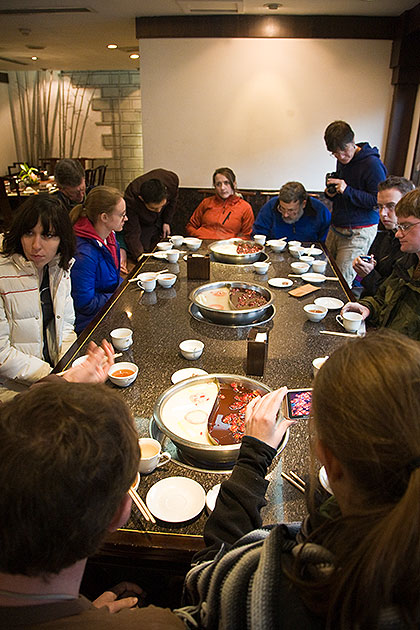
Returning to central Chengdu from the Giant Panda Breeding Center [previous page], we have a Sichuan Hot Pot lunch. This is a do-it-yourself affair, with the heated hot pots set in the center of the table, and bite-size pieces of uncooked fish, shellfish, meat and vegetables provided on trays. We hold each bit of food with chopsticks and dip it in the broth to cook it, fondue-style. There is a mild side (to the left side in photo) and a spicy side (right), which are distinguished by the make-up of the cooking broth. I sit on the spicy side (of course) and have an excellent meal, though it is only too easy to lose your morsel in the broth while trying to cook it.
After lunch we head to Baihuatan Park for some recreation. We enter the park over a fancy pedestrian bridge, but we notice that the river we are crossing is little better than a trash-strewn open sewer, with foul-looking water in those places where there is any (the level is low).
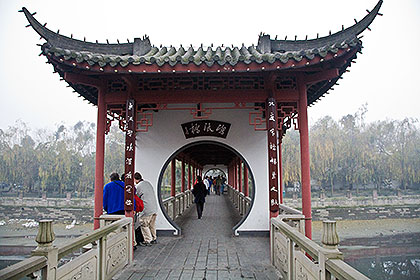

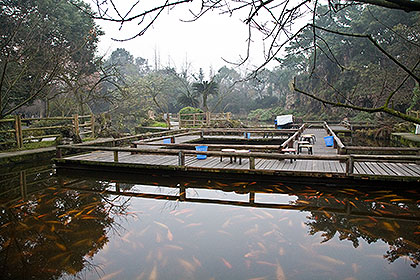
The park has ponds with boats and ponds with fish (and people fishing).
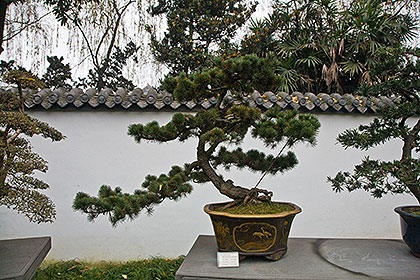
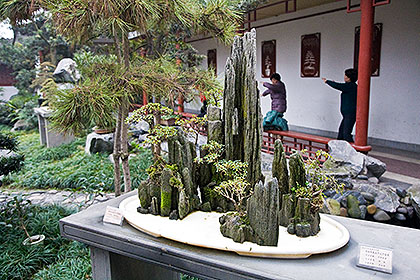
Bonsai and T'ai Chi.
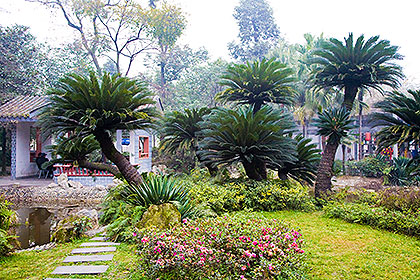
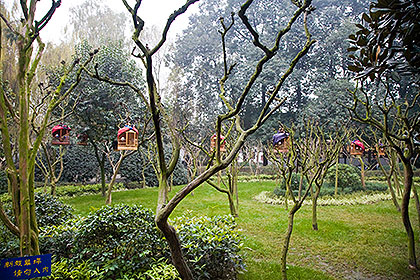
Beautiful landscaping (though leaves are coated with soot). People bring their birdcages and hang them in trees to let the birds sing to each other.
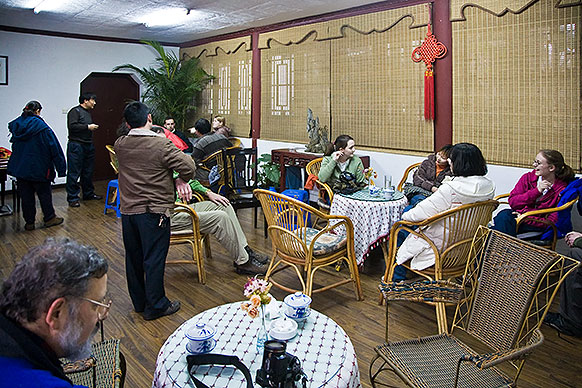
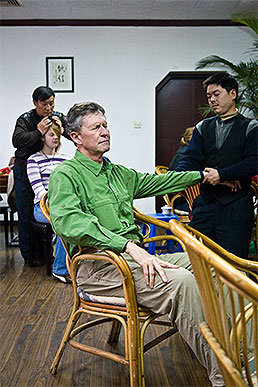
A tea room in the park also offers relaxing massages.
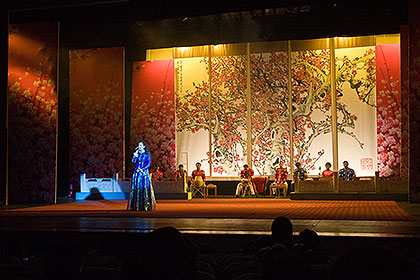
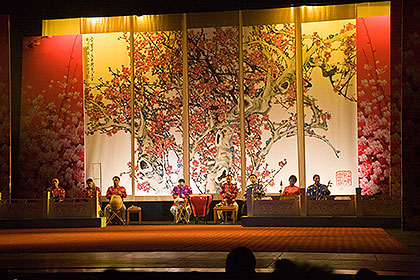
In the evening we go to the Jinjiang Theater to see a Sichuan Opera, which combines singing (in high-pitched Sichuan dialect) with music, dancing, melodramatic skits, and acrobatics.

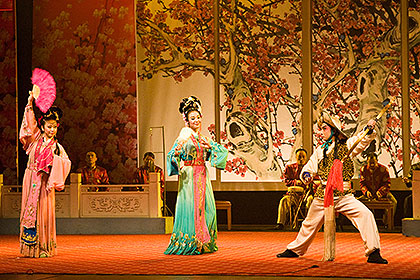
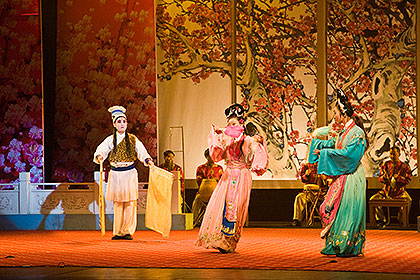

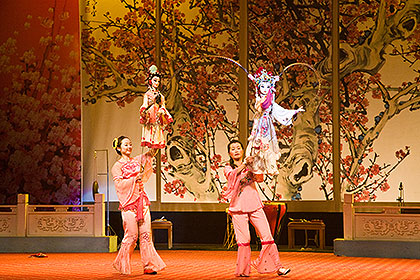
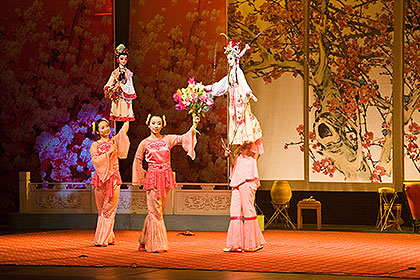

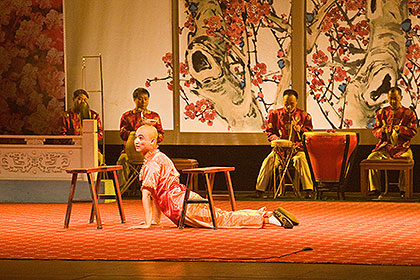
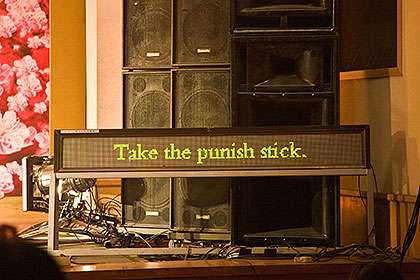
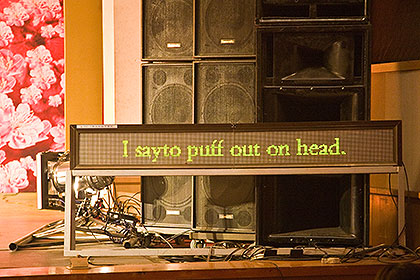
Translations are displayed on an electronic screen, but translating the translations is a bit of a challenge.
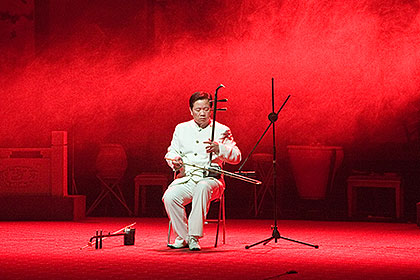
A soloist on the Erhu.
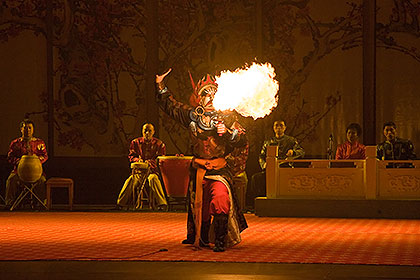
Fire breathing.
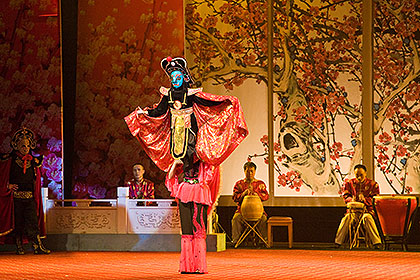
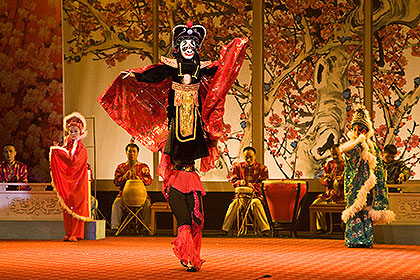
This act features face-changing (Bianlian), in which actors make nearly instantaneous changes of masks while performing acrobatics.
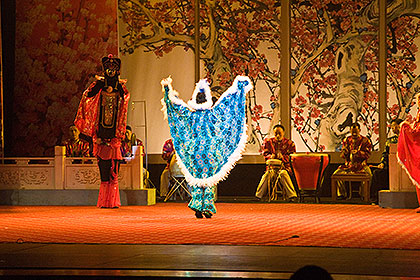
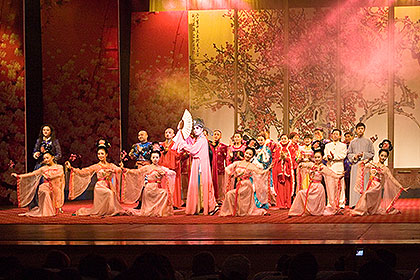
The next morning we visit Wuhu Shrine (Wuhu Si), the burial place of Liu Bei, king of this part of China ("Riverlands") in the Three Kingdoms Period. The shrine particularly commemorates the service of Zhuge Liang (also known as Kongming), a brilliant military advisor to Liu Bei. Several temples here have statues of prominent figures in the Three Kingdoms Period, as well as explanatory information (most of it only in Chinese, though).

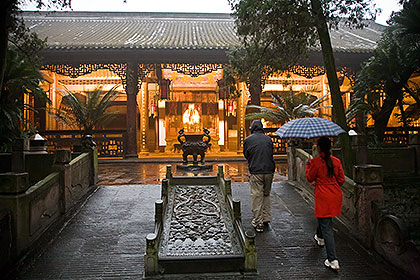

Liu Bei (161-223 AD), founder of the Shu Kingdom ("Riverlands").
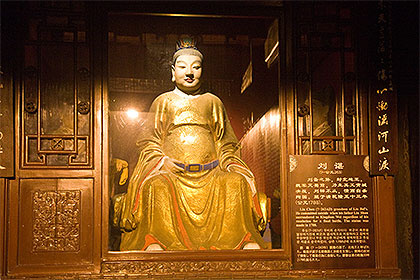
Liu Chen (?-263 AD), grandson of Liu Bei, who committed suicide when his father, Liu Shan surrendered the kingdom to the state of Wei.
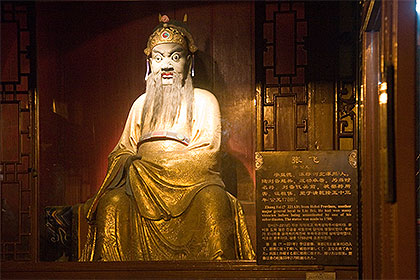
Zhang Fei (?-221 AD), another major general to Liu Bei.
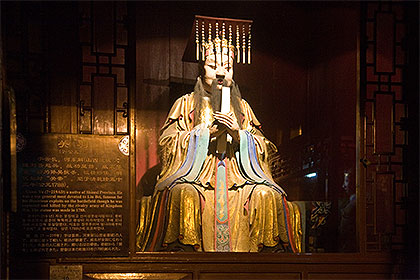
Guan Yu (?-219 AD), a major general to Liu Bei.
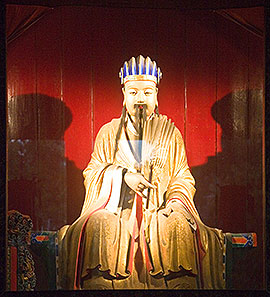
Zhuge Liang ("Kongming", 181-234 AD). Wise and loyal strategist and Prime Minister to Liu Bei.
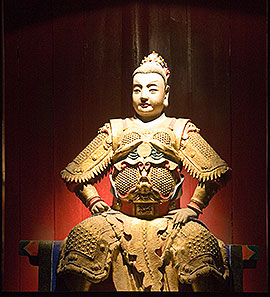
Zhuge Shang (?-263 AD), grandson of Zhuge Liang; died as teenager fighting with his father in the war with Wei.
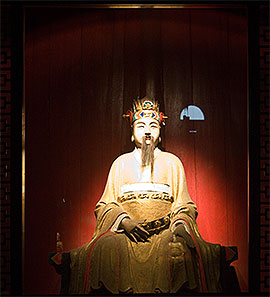
Zhuge Shan (227-263 AD), son of Zhuge Liang; died in battle with invading army of Wei.
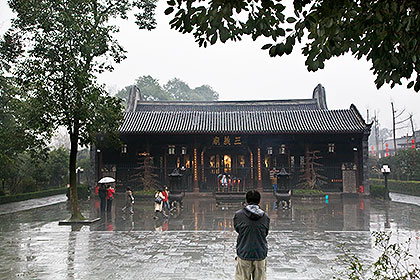
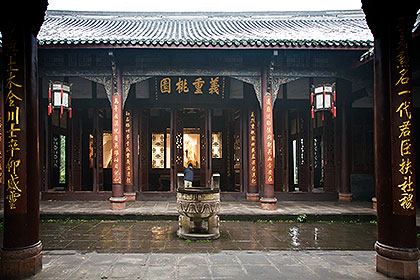
San Yi Temple, behind the main one, is dedicated to the memory of the "Peach Garden Three".
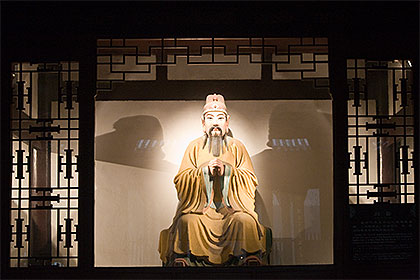
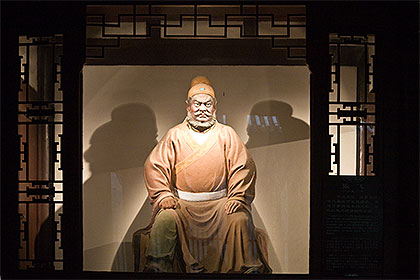
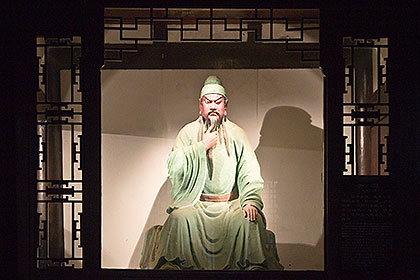
The "Peach Garden Three" were Liu Bei (above left), Zhang Fei (above right), and Guan Yu (left) who pledged their mutual support to each other in a peach garden to carry on the fight to preserve the Han Dynasty. Their fight was ultimately unsuccessful, giving way to the Three Kingdoms (Wei, Shu and Wu), and subsequently to the kingdoms and dynasties that followed.
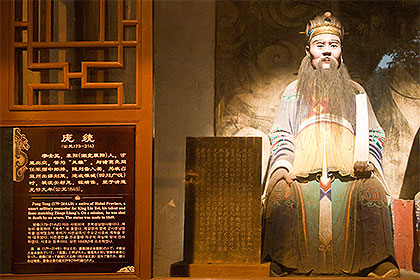
Pang Tong (179-214 AD), military counselor to king Liu Bei.
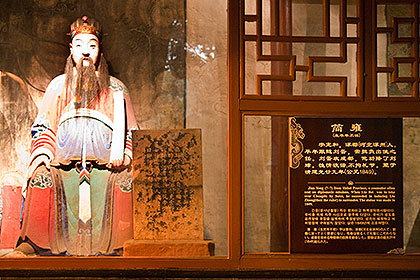
Jian Yong (?-?), diplomatic counselor to Liu Bei. When Liu Bei was about to take Chengdu by force, Jian Yong was able to talk Liu Zhang (then the ruler) to surrender instead.
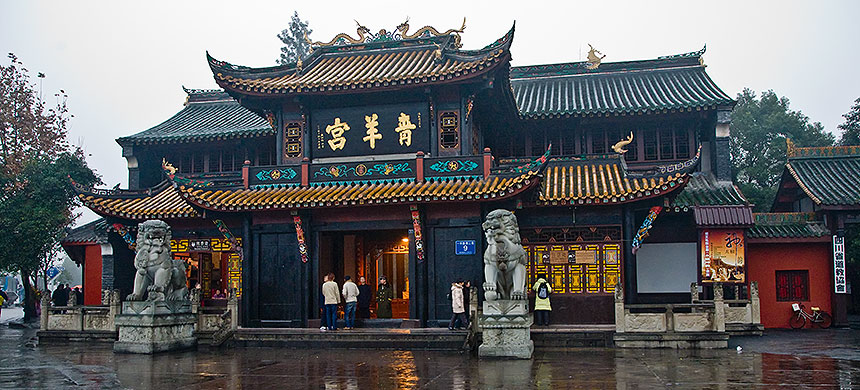
Qingyang Gong ("Green Goat Temple") is Chengdu's main Daoist temple. The name refers to the final words of Laozi, that those who understood his teachings could find him at the Green Goat Market.
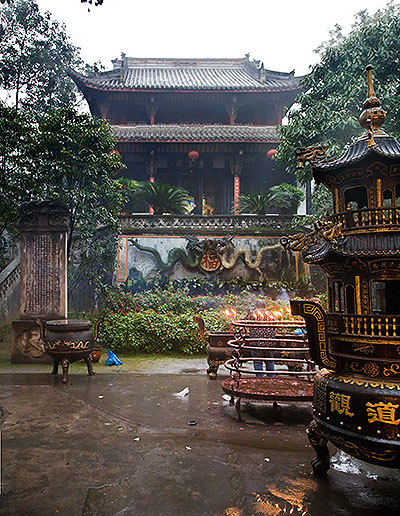
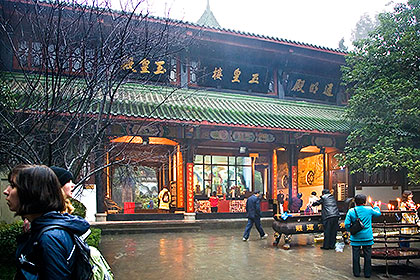
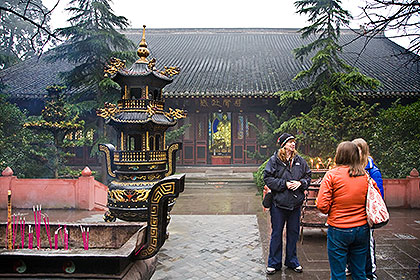
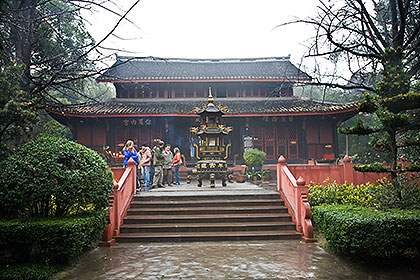
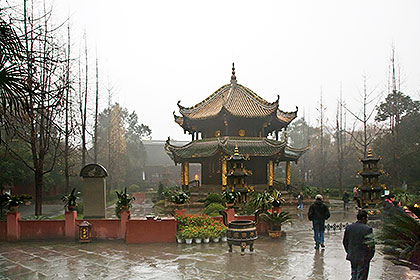
Bagua Pavilion ("Eight Trigrams Pavilion), built in 1882, during the Qing Dynasty. A statue of Laozi riding a green ox is enshrined within.
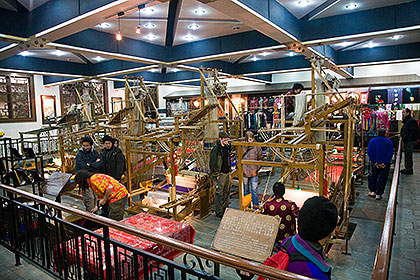
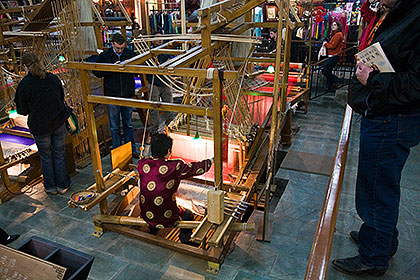
Shu Embroidery (of silk) is claimed to be one of the "four embroidery eletes" of China. We visit a Shu Brocade center, where we see work in progress, demonstrations of technique, and of course the showroom where we have the opportunity to make purchases.
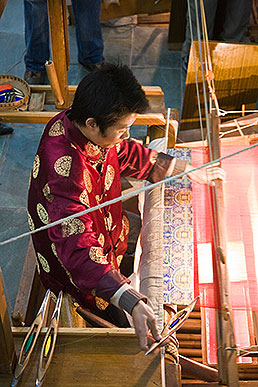
A worker weaving with a Jaquard loom.
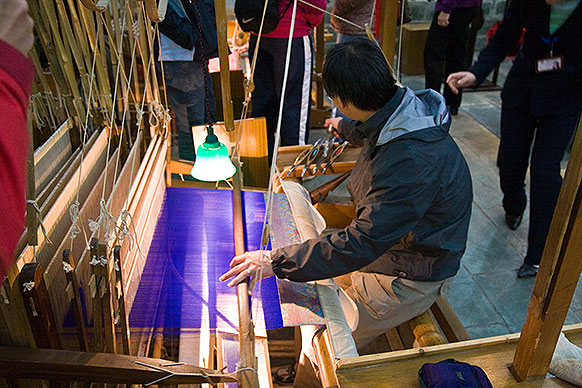
Xiaoming gives it a try.
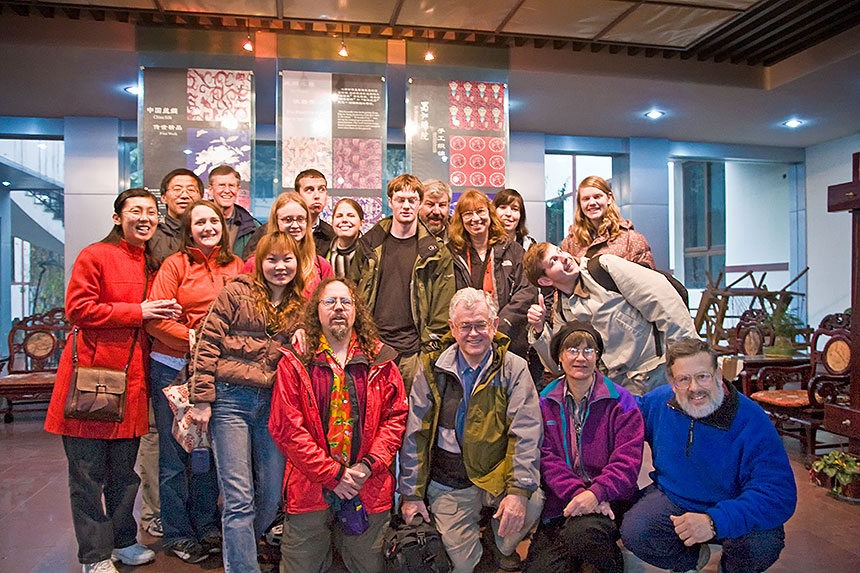
Since only a few of us are going on to Sanya [next page] tomorrow, we have a group picture taken now, in the lobby of the Shu Brocade place. Mixed lighting and glare doesn't help, but here is the result anyway. Left to right in front row: Ping, Dr. Ray, myself, Judy, Bob K. Second row: Lily, Nicole, Sarah, Corwin, Debbie, and Justin. Back row: Xiaoming, Ron, Eric, Elena, Rick, Kelsey, and Jenna.